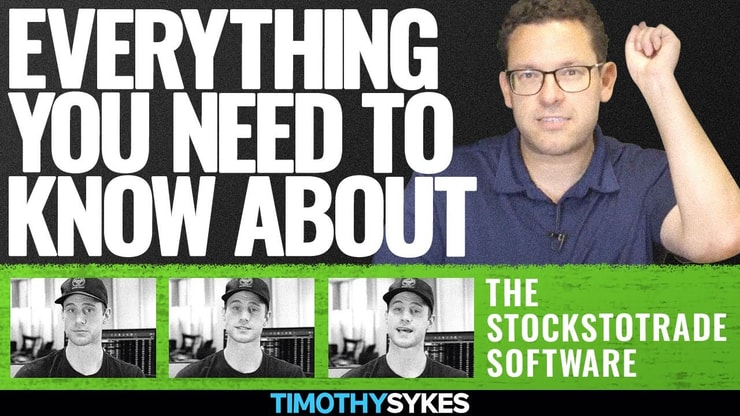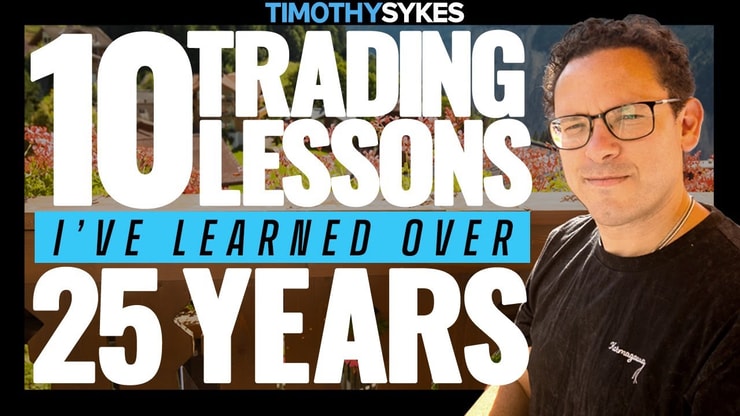Traders want to know: Can you buy OpenAI stock, and if not now, when? With AI dominating headlines and ChatGPT becoming part of daily business workflows, OpenAI has become one of the most-watched private companies in the world. But understanding the opportunity starts with facts, not hype, especially in a market where timing and strategy matter more than raw excitement.
For AI stocks you can trade — check out my AI penny stock watchlist here!
This article will walk you through practical strategies for gaining exposure to OpenAI’s growth — including key insights on Microsoft’s investment, AI-focused ETFs, and what to watch for ahead of a potential IPO.
I’ll answer the following questions:
- Is OpenAI a publicly traded company?
- How does OpenAI’s ownership structure affect potential investors?
- What is Microsoft’s relationship with OpenAI, and how can investors benefit?
- What is OpenAI’s current valuation, and who are its major backers?
- How can I gain exposure to OpenAI through public companies or ETFs?
- What are the main risks of investing in AI-related companies like OpenAI?
- Could OpenAI go public through an IPO or direct listing?
- Can I buy OpenAI stock before an IPO?
Let’s get to the content!
Table of Contents
- 1 Is OpenAI Publicly Traded? Overview of the OpenAI Stock
- 2 OpenAI Valuation History & Key Funding Rounds
- 3 OpenAI Stock Symbol & Ticker (After the IPO)
- 4 Tips for Pre-IPO Trading Strategy
- 5 OpenAI’s Future Growth Catalysts & Revenue Streams
- 6 Key Takeaways
- 7 Frequently Asked Questions
- 7.1 What role does artificial intelligence play in OpenAI’s business model?
- 7.2 Can I get exposure to OpenAI’s growth through companies like Nvidia or Google?
- 7.3 How do shareholders benefit from OpenAI’s business if it’s not public?
- 7.4 What should I consider before adding OpenAI-related trades to my portfolio?
- 7.5 Who are the key people and infrastructure behind OpenAI?
Is OpenAI Publicly Traded? Overview of the OpenAI Stock
OpenAI is not publicly traded, which means you cannot currently buy OpenAI stock on any exchange. There’s no ticker, no stock symbol, and no access to shares for the public — only private investors and strategic partners like Microsoft have exposure.
That doesn’t mean it shouldn’t still be on your watchlist. (Check Breaking News for the latest!)
This matters to traders because many confuse product popularity with investment availability. ChatGPT may be everywhere, but OpenAI’s equity is still privately held under a capped-profit model. For new traders, this is a reminder that not every hot name in tech is tradeable. I teach students to focus on what can be traded, not what might be available someday. You trade what’s in front of you, not just the headlines.
Current Status – Private Company
OpenAI remains a private company, structured with a for-profit subsidiary (OpenAI LP) controlled by its nonprofit parent (OpenAI Inc.). This setup was designed to attract outside capital while keeping the original mission of AI safety intact. It’s not a standard model, and that alone creates confusion among traders looking for clear ownership structures.
Despite public interest, there’s no public offering yet. As of now, Microsoft holds an estimated 49% stake in OpenAI’s for-profit entity, giving them major influence over operations, revenue sharing, and access to technology. If you’re hoping to trade OpenAI stock, you’re watching from the sidelines until an IPO is confirmed. That’s why I push the importance of identifying alternative plays with direct exposure, like Microsoft or even CoreWeave, which provide access to OpenAI’s growth indirectly.
OpenAI Valuation History & Key Funding Rounds
The story of OpenAI’s growth isn’t just about innovation. It’s about capital, structure, and calculated partnerships. Knowing how a company raised money and who backed it helps you understand how it might price its shares if it ever hits the public market. I always look at a company’s fundraising history before I even think about its stock price potential.
Early Funding Rounds (2015–2020)
OpenAI started as a nonprofit in 2015, backed by names like Elon Musk, Sam Altman, Peter Thiel, Y Combinator, and Khosla Ventures. The goal wasn’t profit — it was research. But that changed in 2019 when OpenAI created a capped-profit arm, OpenAI LP, to raise more capital and scale up model development.
In these early stages, funding rounds weren’t typical venture rounds with standard equity and valuations. Instead, investors were promised capped returns, a unique structure meant to preserve OpenAI’s mission while still incentivizing outside capital. As a trader, I look at these kinds of details to understand what the exit strategy might look like — if it even exists. Some of the earliest supporters exited quietly or distanced themselves when the company shifted to a more commercial focus, which tells you how the internal vision has changed.
The excitement around ChatGPT has drawn attention to many lesser-known AI companies. These aren’t the names plastered across headlines, but smaller firms working on tools, data handling, and niche AI applications. They can move fast but also carry high volatility, which is why traders need a clear plan before buying in. For a closer look at some of these overlooked plays, see the guide to under-the-radar AI stocks.
More Breaking News
- TTMI Shares Surge as Q3 Earnings Exceed Expectations, Price Target Raised
- Prime Medicine Stock Poised for Strategic Growth With New Developments
- AMD Stock Tumult: Navigating the Recent Challenges
- What’s Next for Freshpet Inc. Shares?
Major Partnerships & Microsoft Investment (2021–2023)
Microsoft entered the picture in a big way starting in 2019 with a $1 billion investment. By 2023, its total commitment reached $13 billion, giving it exclusive rights to commercialize OpenAI models through Azure and other platforms. This partnership shaped OpenAI’s business model and cloud infrastructure, fueling the expansion of ChatGPT and enterprise APIs.
Traders need to pay attention to partnerships like this because they reveal leverage. Microsoft isn’t just a partner — it’s the gatekeeper to OpenAI’s revenue. Reports in 2025 show OpenAI is renegotiating its deal to reduce Microsoft’s revenue share from 20% to 10%. Moves like that matter because they reflect both leverage and long-term independence planning. I teach students to read between the lines — company statements are one thing, but strategic renegotiations often say more about future intentions than press releases.
OpenAI Stock Symbol & Ticker (After the IPO)
If and when OpenAI does go public, it will need a ticker symbol just like any stock. But since the company hasn’t filed for an IPO yet, there’s no official symbol.
What does this mean for traders? You can’t set alerts or track performance yet, but knowing where to watch for updates helps you stay ahead. I tell students to keep watchlists clean and focused on what’s actionable, not filled with names that aren’t even tradable yet.
Potential Ticker Symbols (Speculation)
There’s speculation that OpenAI might list under something like OPAI, CGPT, or GPT, but this is all guesswork. Until the company files an S-1 with the SEC, nothing is confirmed.
Still, experienced traders look for patterns. Most AI companies that have gone public recently have leaned into symbols that reflect their mission. CoreWeave, SoundHound AI, and C3.ai have all used branding-forward tickers to attract attention. If OpenAI wants a high-visibility debut, expect something simple and related to GPT or AI. That said, don’t get too attached — speculation doesn’t move the market if there’s no listing.
Where to Check for Official Symbol Announcements
Official announcements about OpenAI’s IPO and ticker symbol will come through SEC filings, finance news sources like CNBC and Reuters, and directly from OpenAI’s press page. Traders should monitor platforms like Nasdaq and NYSE, which list upcoming IPOs, and track any S-1 registration statements filed with the SEC.
I always remind students that real traders focus on verifiable data, not Twitter rumors. When a company files to go public, the details will be public — valuation, pricing targets, ticker, share class structure. Until then, it’s all just noise. Set alerts for sources that actually move markets.
It’s important to use a platform that offers real-time data and verified news to make informed trading decisions.
When it comes to trading platforms, StocksToTrade is first on my list. It’s a powerful day and swing trading platform with real-time data, dynamic charting, and a top-tier news scanner. I helped to design it, which means it has all the trading indicators, news sources, and stock screening capabilities that traders like me look for in a platform.
Grab your 14-day StocksToTrade trial today—it’s only $7!
Tips for Pre-IPO Trading Strategy
Pre-IPO access is limited, and most traders won’t get shares before the IPO unless they have a direct connection to private placement deals or structured funds. That said, there are smart ways to prepare.
I’ve taught thousands of students that preparation is everything. When a hyped stock like OpenAI eventually IPOs, there will be volatility, momentum spikes, and short-term setups. But you can’t trade effectively without a clear plan. Watch how past AI IPOs moved in their first weeks. Study CoreWeave’s run. Learn what worked, what didn’t, and how supply-demand pressure shaped the early price action.
It’s also worth studying how risky AI stocks can be. AITX is one example that shows how speculative hype can attract traders but also create sharp losses if you’re late to the move. These names can be tempting when volume spikes, but they don’t always have the fundamentals to support a lasting trend. To understand what makes an AI stock like this so volatile, read the overview on AITX stock.
OpenAI Stock Price
There is no current OpenAI stock price because the company hasn’t gone public yet. Any “price” you see online is speculation or secondary market chatter, and those prices usually come from private share sales — not public trades.
Still, traders can use private valuation estimates to build scenarios. In 2025, OpenAI was reportedly valued at $300 billion during talks with investors including SoftBank. Based on that, if 1 billion shares were floated, pricing could start at $300 per share. But this is theoretical. Actual IPO pricing depends on revenue growth, cash flow projections, market appetite, and institutional demand. I teach that it’s better to wait for the actual filing than to chase imaginary numbers.
OpenAI’s Future Growth Catalysts & Revenue Streams
OpenAI’s growth comes from three main areas: ChatGPT subscriptions, enterprise software licensing, and partnerships with major companies like Microsoft and Oracle. As of June 2025, OpenAI hit a $10 billion annualized revenue run rate, up from $5.5 billion just six months earlier.
This growth is explosive, but it’s not guaranteed. Much depends on execution, competition, and how fast AI adoption continues across enterprise and consumer markets. OpenAI also plans to launch hardware products in partnership with Jony Ive, aiming to create “AI companions” that merge software with everyday devices. These types of moonshots grab headlines but also introduce risk. Traders need to remember: Growth without profitability can make for volatile stock performance. Follow the data, not the drama.
Investors looking at OpenAI should consider how Buffett favors strong balance sheets and durable advantages instead of hype cycles. Applying that mindset can help you weigh whether to sit on the sidelines or look at related companies building real cash flow. If you want to see how Buffett’s approach lines up with today’s AI sector, check out this breakdown of Warren Buffett AI stocks.
Key Takeaways
OpenAI stock is not available for public trading yet. The company remains private, with major ownership by Microsoft and other institutional backers. While a future IPO is likely, there’s no official date, symbol, or stock price at this time.
Still, traders can prepare by following the company’s revenue progress, product launches, and partnership changes. I always focus on trading what’s real — and right now, the best strategy is to monitor partners like Microsoft and look for actionable trades tied to AI momentum. When OpenAI does list, the real setups will come fast. Be ready.
This is a market tailor-made for traders who are prepared. AI stocks thrive on volatility, but it’s up to you to capitalize on it. Stick to your plan, manage your risk, and don’t let FOMO drive your decisions.
These opportunities are fast and unpredictable, but with the right strategy, you can make them work for you.
If you want to know what I’m looking for — check out my free webinar here!
Frequently Asked Questions
What role does artificial intelligence play in OpenAI’s business model?
Artificial intelligence is the core of OpenAI’s products, including ChatGPT, enterprise API services, and custom AI applications used by developers and businesses. These tools power services that enhance productivity, automate workflows, and provide deep analytics to clients. As demand for AI-powered software grows, OpenAI’s valuation models are increasingly tied to how effectively it scales its infrastructure and delivers value through advanced models.
Can I get exposure to OpenAI’s growth through companies like Nvidia or Google?
Yes, both Nvidia and Google provide indirect exposure to OpenAI’s growth through partnerships and shared AI initiatives. Nvidia supplies GPUs that power OpenAI’s training infrastructure, while Google competes with OpenAI through its Gemini models and cloud AI services. Traders often analyze these companies on a trading platform for opportunities tied to AI sector momentum when direct access to OpenAI equity isn’t available.
Since OpenAI is private, only internal shareholders like employees, the board, and key partners such as Microsoft benefit directly from its equity. Public traders can’t own OpenAI securities yet, but they can gain exposure by trading options or ETFs that hold major AI players like Microsoft or Nvidia. If and when OpenAI lists, ownership will expand to public shareholders depending on IPO structure and share class terms.
Before trading stocks related to OpenAI’s ecosystem, assess how they fit your portfolio’s risk profile, sector exposure, and return objectives. Use analytics tools and valuation models to compare AI-related companies based on information like earnings growth, pricing trends, and capital efficiency. I always stress the importance of understanding what you’re trading and why, especially in a fast-moving sector like AI.
Who are the key people and infrastructure behind OpenAI?
OpenAI’s leadership includes CEO Sam Altman, co-founder Greg Brockman, and a team of top AI researchers, engineers, and developers. The company’s headquarters is in San Francisco, where it operates one of the most advanced AI research labs in the world. Success depends not just on its models, but also on the internal alignment between its board, employees, and the long-term mission guiding its product and services roadmap.











Leave a reply